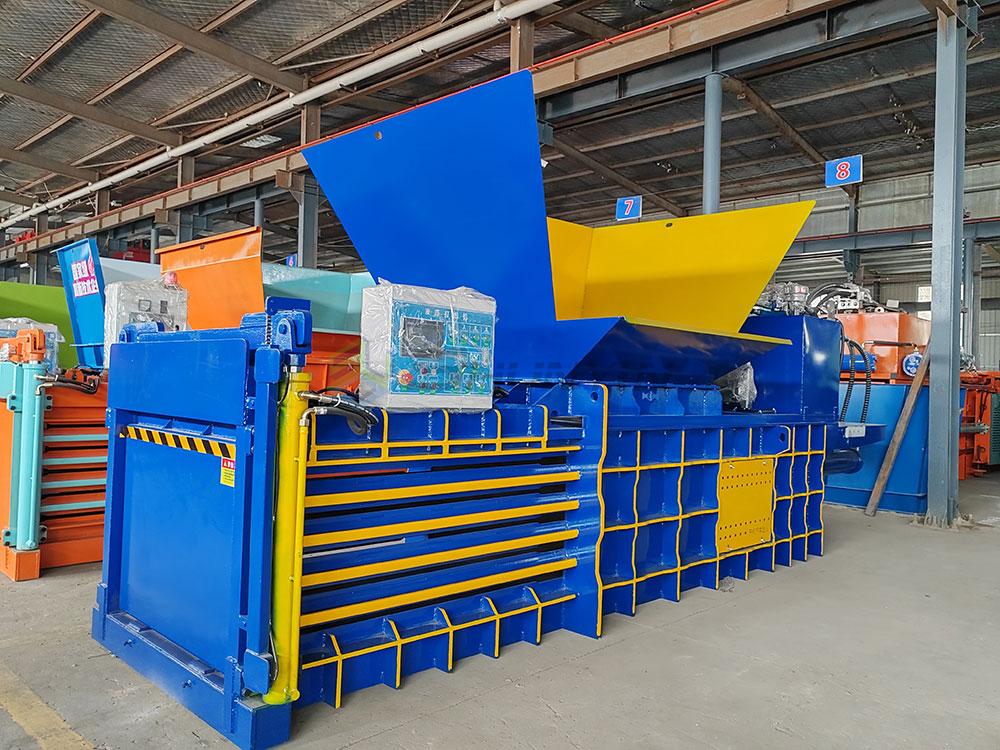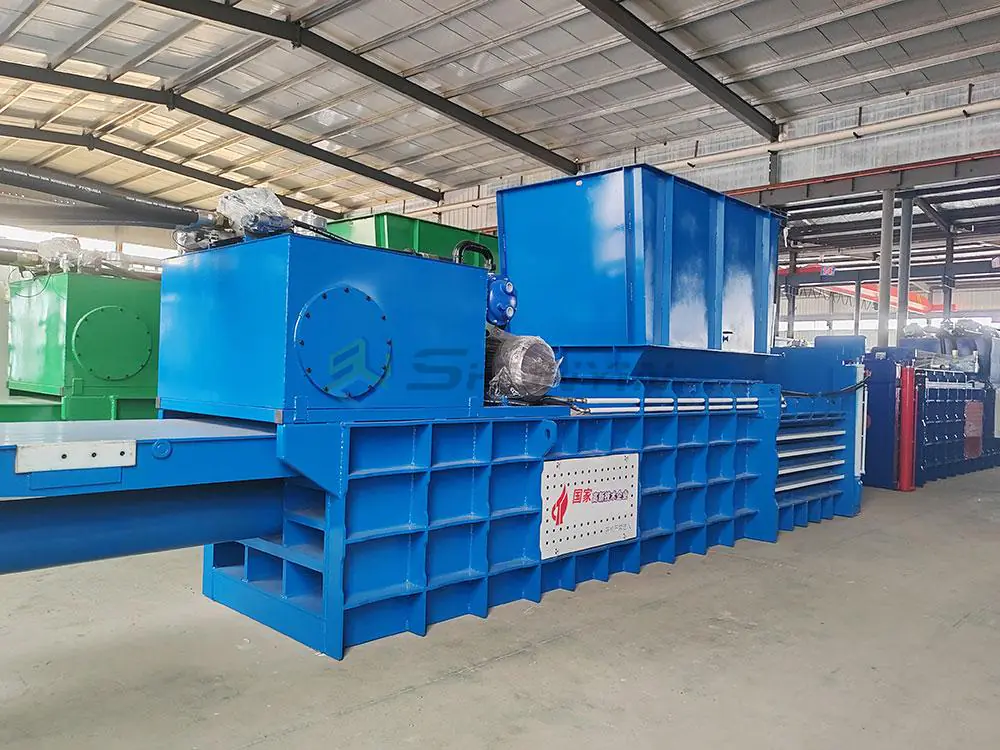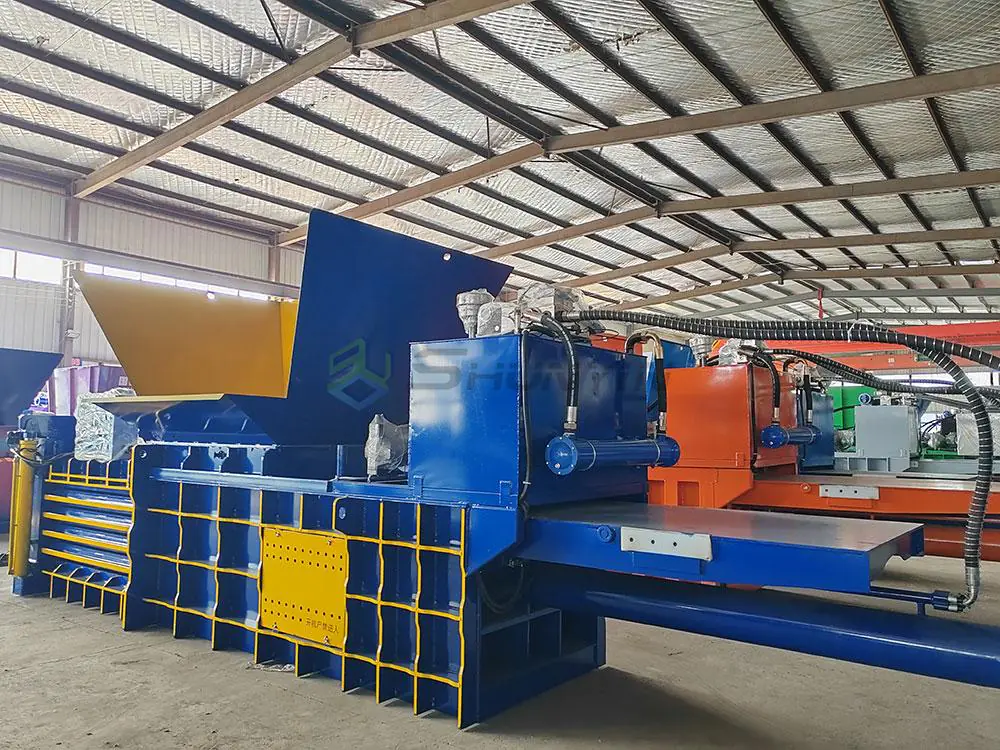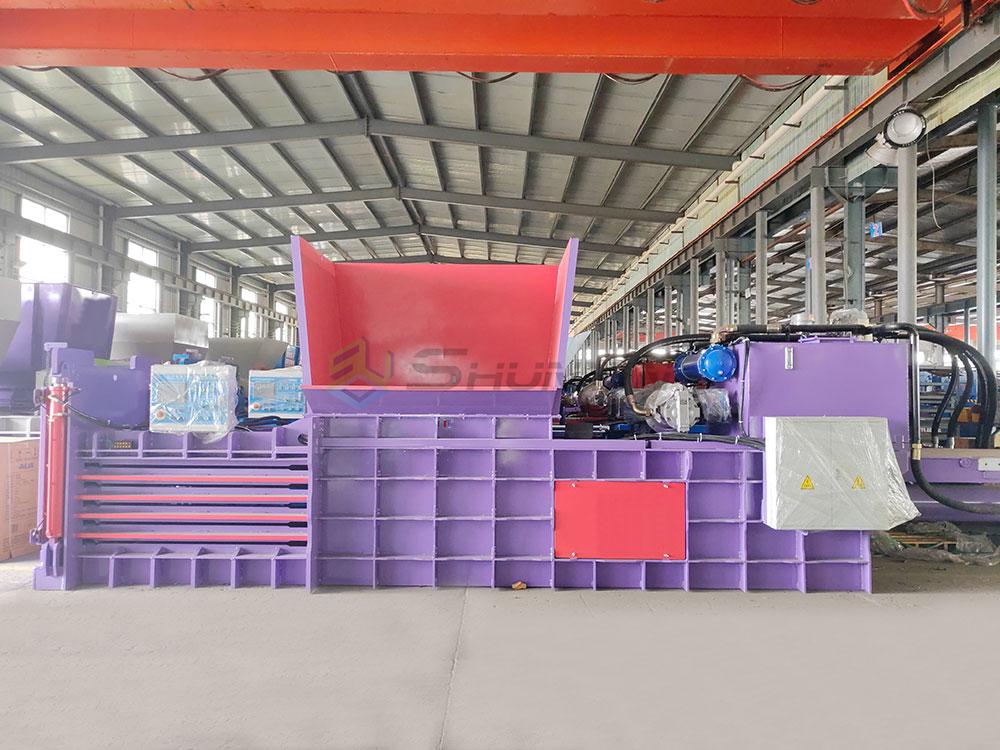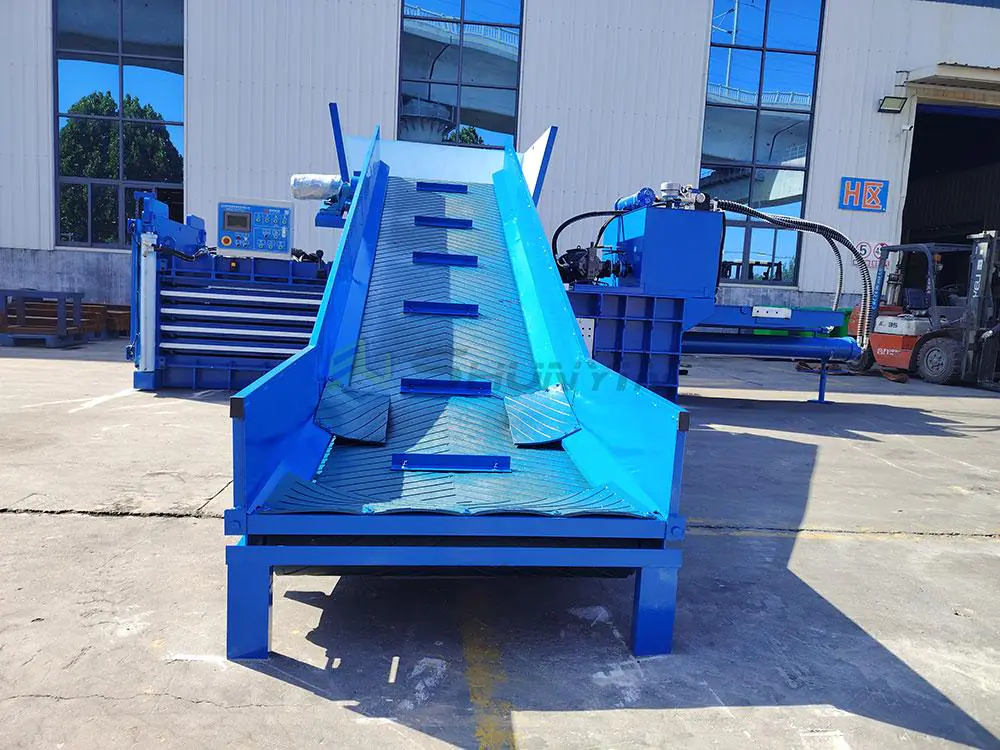Mountains of plastic bottles stealing warehouse space? Our hydraulic giants compress chaos into profit cubes. See the transformation.
Hydraulic horizontal balers crush PET bottles using oil-powered pistons generating immense force. ShunYin’s 200-ton models achieve 15:1 volume reduction, producing export-ready bales up to 450kg with auto-wire tying. Essential for large-volume beverage recyclers.

Investing in heavy machinery demands clear answers. Here’s how I help clients navigate key questions.
What is the cost of pet bottle baler machine?
Seeing buyers overpay for underpowered machines hurts. Break down every dollar.
200-ton PET balers range from $38,000-$92,000. ShunYin units start at $46,900 with customizable automation tiers. Installation/transport adds 12-18%. Premium German hydraulic pumps impact price significantly.

Never just consider purchase price – analyze these factors:
Complete Cost Comparison Chart (5-Year Outlook)
| Expense Type | Chinese Standard | ShunYin Premium | Japanese Import |
|---|---|---|---|
| Purchase | $31,500 | $49,200 | $84,000 |
| Maintenance | $18,000 | $6,900 | $14,200 |
| Downtime Loss | $27,500 | $4,000 | $12,000 |
| Total | $77,000 | $60,100 | $110,200 |
Why our hydraulic systems last? We test cylinders through 50,000 compression cycles. A Singaporean plant hasn’t needed repairs in 4 years despite 24/7 operation.
Get your personalized quote: WhatsApp specs to 0086 13505379893 or email [email protected].
What is a hydraulic baler?
Many confuse "hydraulic" with marketing buzzwords. Understand the core mechanics.
Hydraulic balers use pressurized fluid to drive pistons crushing materials. Key advantages: sustained peak force delivery and gradual compression control. ShunYin systems achieve continuous 200-ton pressure through German Rexroth pumps.

Three critical design elements:
Power Transmission Flow
- Electric motor → Hydraulic pump
- Pump → High-pressure fluid (280-340 bar)
- Fluid → Dual pistons
↳ Horizontal compression force
Advantages Over Mechanical Drives
| Parameter | Hydraulic System | Crank System |
|---|---|---|
| Force Consistency | 98% at all stages | Declines 23% near bale end |
| Overload Protection | Automatic relief valves | Gear slippage/failure |
| Variable Pressure | ✅ Adjustable per material | ❌ Fixed |
A North American recycler doubled bale density after switching: their PET bales went from 250kg to 460kg with thinner wire. Fluid systems maintain force even when bottles compress unevenly.
Request our engineering diagrams: See hydraulic schematics
What are the different types of baler machines?
Choosing wrong creates costly bottlenecks. Match machine type to daily volumes.
Primary balers types: vertical (manual), horizontal (semi-auto), and fully automatic with conveyor systems. Product determines choice: small operations buy verticals; 10+ ton producers need horizontals.

Detailed analysis for PET recyclers:
Machine Type Comparison Matrix (PET focused)
| Type | Max Daily PET | Labor Required | Bale Weight |
|---|---|---|---|
| Vertical | 2.5 tons | High (5mins/bale) | 120kg max |
| Semi-Auto Horizontal | 8 tons | Medium (3min/bale) | 250-300kg |
| Fully Automatic Horizontal | 15+ tons | Low (only strapping) | 400-450kg |
Supplementary Equipment
- Shredders (pre-compaction)
- Dewatering presses (for wet waste)
- Conveyor sorting lines
We recently averted disaster for a Japanese client: they planned vertical balers until we proved they’d require 8 units vs. one 200-ton horizontal. Saved them $29,000/year in labor alone!
What is a baling machine?
Before visiting factories, understand what makes quality balers.
Baling machines compress loose materials into dense blocks using mechanical or hydraulic force. Our PET-specific models feature stainless steel chambers and puncture-proof filters removing liquid residue during compression.

Five core functions in automated PET balers:
Operation Sequence Guide
- Infeed → Geared conveyor with bottle orienters
- Pre-press → Preliminary compaction chamber
- Main Compression → Hydraulic rams applying peak force
- Wrapping → Auto-wire tier (4-6 straps/bale)
- Ejection → Roller conveyor to storage area
Critical Design Features Table
| Component | Standard Option | ShunYin Upgrade |
|---|---|---|
| Compression Box | 10mm steel | 18mm reinforced |
| Filtration | Basic mesh | Self-cleaning filters |
| Control System | Basic PLC | Siemens PLC with material memory |
Tesla rejected three suppliers before choosing our 200-ton model for its zero-liquid remanence guarantee. Moisture control prevents bale rejection at mills.
Test quality yourself: email [email protected] to arrange factory ATEX certification document verification.
Conclusion
200-ton hydraulic balers transform PET recycling profitability. Analyze types, mechanics, and total costs carefully. Let’s crush your bottlenecks together.


